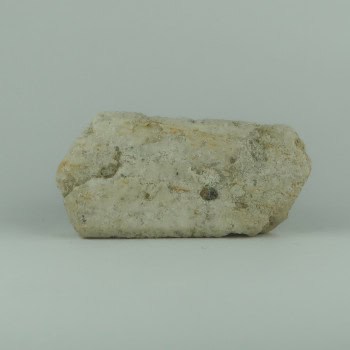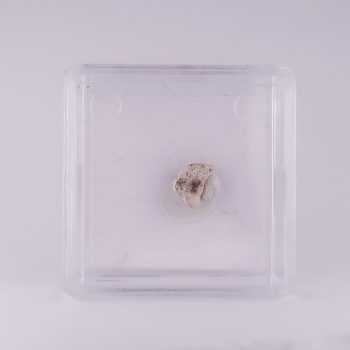Kaolinite
Kaolinite is a white to off-white clay mineral that commonly occurs as earthy, powdery masses or compact, fine-grained aggregates.
Showing all 2 results
-

Kaolinite after Orthoclase from Melbur China Clay Pit, Cornwall
£15.00 -

Spessartine Garnet and Silver in Kaolinite from Broken Hill South Mine, Australia
£7.50
Information about Kaolinite
Kaolinite is a white to off-white clay mineral that commonly occurs as earthy, powdery masses or compact, fine-grained aggregates.
It often forms soft, chalky lumps and occasionally in pseudo-hexagonal platelets visible under a microscope. Its texture is typically smooth and soft, and its luster ranges from dull to pearly on cleaved surfaces.
Uses and History
Kaolinite is one of the most important industrial minerals, extensively used in ceramics, particularly in the production of porcelain and fine china.
It is also a key ingredient in paper manufacturing, where it serves as a coating and filler to enhance brightness and smoothness. Kaolinite is used in the production of paints, plastics, rubber, and as a raw material in the chemical industry for producing aluminum sulfate. It is also used in cosmetics as a mild exfoliant and as an absorbent in face powders.
The name kaolinite derives from the Chinese “Gaoling,” meaning “high ridge,” where it was first mined in the Gaoling village, Jingdezhen, Jiangxi, China. It was first described as a mineral in 1637 by Song Yingxing but was mined for hundreds of years before that, and was known as ‘kaolin earth’.
Kaolinite played a crucial role in the early development of porcelain in China, which was later adopted and refined in Europe during the 18th century. Its discovery in Europe sparked a significant industrial revolution in ceramics and contributed to the widespread use of fine porcelain globally.
Mineralogy
White to cream, brown, yellow-brown, sometimes stained or oxidised.
Hazards and Warnings
Prolonged inhalation of kaolinite dust may cause respiratory issues like kaolinosis; adequate ventilation is advised when handling in powdered form.
Mineral collectors should wash their hands after handling specimens, to avoid any exposure to potential toxins.
Almost all rocks, minerals (and, frankly, almost all other substances on earth) can produce toxic dust when cutting, which can cause serious respiratory conditions including silicosis.
When cutting or polishing rocks, minerals, shells, etc, all work should be done wet to minimise the dust, and a suitable respirator or extraction system should be used.
Translations
Arabic:
- كاولينيت
Hindi:
Portuguese:
Bengali:
Indonesian:
Punjabi:
English:
Italian:
- Caolinite
Russian:
- Каолинит
French:
Japanese:
- カオリナイト
Spanish:
- Caolinita
German:
- Kaolinit
Korean:
Thai:
Gujurati:
Mandarin Chinese:
- 高岭石
Urdu:
